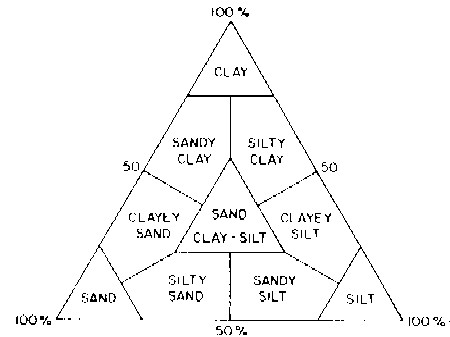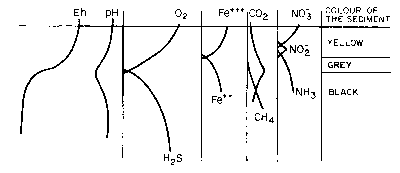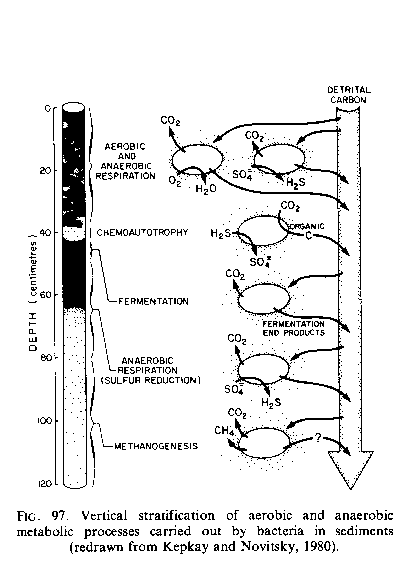- Lithogenous particles are derived from preexisting rocks by weathering (disruption of rocks by wind, temperature, water), deposited by wind or rivers
- Volcanogenic particles are derived from vulcanic eruptions, range from boulders to dust
- Glacially derived particles are ground from rock beds by moving glaciers
- Biogenic particles: shells or skeletons of organisms that sink to the sea floor after the organisms death; made of silicate or carbonate
-
Stromatolites:
cyanobacteria produce these deposits by trapping fine sediments into mucous
mats; cyanobacteria live on the surface of such aggregates, the inner part
becomes cemented by carbonate, which precipitates chemically upon raise
of pH by cyanobacterial photosynthesis
 Stromatolites, Australia
Stromatolites, Australia - Hydrogenous deposits from as a result of chemical reactions within seawater or between seawater and sediments; most known example are manganese nodules, with „growth rates“ of 5-10 mm/million yr (0.2-0.4‘/million yr).
- Cosmogenous particles originate from space, mostly Ni-Fe, and Si particles
- Classification scheme of sediments according to the ratio of silt, clay, and sand (Shepard, 1954)
- Vertical gradients within soft sediments: major zonation in oxic and anoxic depths; note highest nitrite (NO2) concentrations at the oxic-anoxic interface; only reduced substrates (NH4, CH4, H2S) are found in anoxic depths
- Biological processes show a similar vertical zonation in soft sediments; heterotrophic respiratory metabolism prevails in oxic surface layers; chemoautotrophic bacteria reside at the oxic-anoxic interface; anoxic layers contain anaerobic heterotrophic bacteria that use reduced substrates (H2S, NH4+, SO42-) for energy and organic carbon
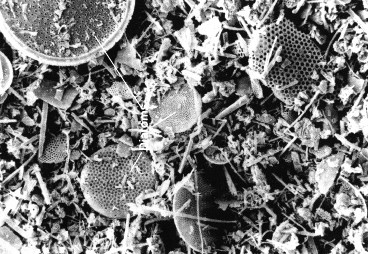
Diatom sediments
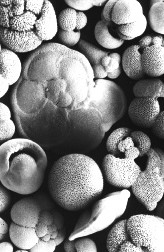
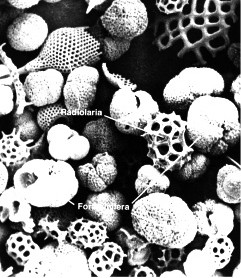
Sediments
of foraminifera (left) and radiolaria (right)
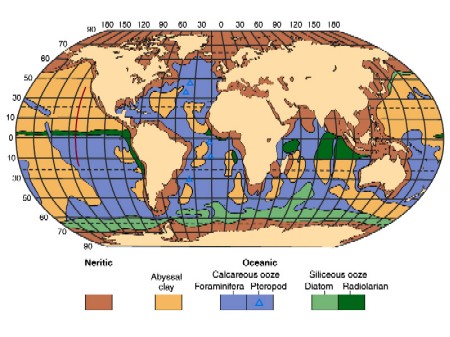
Distribution
of different biogenic sediment types. Note the predominance of radiolarian
sediments near the equator, and diatom ooze around Antarctica; pteropod
calcareous ooze is mainly deposited in the Atlantic Ocean
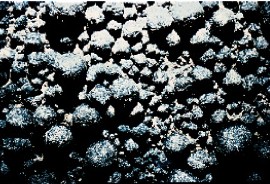 Manganese nodules
Manganese nodules
